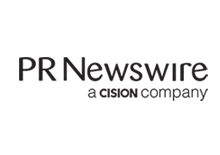PCMA Offers Policy Solutions to Reduce Prescription Drug Costs
WASHINGTON, Jan. 28, 2019 /PRNewswire/ -- As Congress begins to examine high prescription drug prices, the Pharmaceutical Care Management Association (PCMA) sent letters to several congressional committees highlighting the value pharmacy benefit managers (PBMs) provide to patients and payers as well as outlining policy options to reduce prescription drug costs.
PBMs administer prescription drug plans for more than 266 million Americans with health coverage through employers, health insurers, labor unions, Medicare and Medicaid. Using innovative cost-saving tools and technologies, PBMs are working every day on behalf of patients and payers to increase affordability and access to prescription drugs.
"PBMs are advocates for consumers in the fight to lower prescription drug costs," said PCMA President and CEO JC Scott. "While only manufacturers have the power to set prices, we recognize that we all have a role to play in helping to lower costs. PBMs have an established record of negotiating with manufacturers to reduce costs for consumers. As Congress looks into drug pricing, we know that more needs to be done, and we believe the key to reducing prescription drug costs is increasing and encouraging competition. We are best able to negotiate when competition exists, and support a number of ideas for increasing competition and building upon market-based tools in public programs."
The solutions PCMA recommended to the chairs and ranking minority members of congressional committees examining prescription drug pricing include both legislative and regulatory proposals to reduce prescription drug costs.
The proposals include:
-- Address Part D's protected classes. Designating "classes of clinical
concern" where all or substantially all drugs in a class must be covered
allows drug manufacturers to name their price. CMS already applies
careful plan formulary coverage checks to assure proper coverage. A CMS
plan to only moderate the effect of protected classes -- not eliminate
them -- would save $2 billion over 10 years.
-- Encourage greater use of generics for Part D low-income-subsidy
enrollees. MedPAC recommended allowing the Secretary to lower cost
sharing on generics and raise it for brands that have generic
competition. Allowing plans to lower generic cost sharing for these
beneficiaries would save money for beneficiaries, taxpayers, and the
Medicare program.
-- Modify the requirement for two drugs per class. The requirement that
Part D plans cover two drugs per class is outmoded. It has encouraged
manufacturers to argue for ever more granular classes and reduced
competition, increasing Part D costs. Modifying the requirement by
requiring plans to ensure access to therapies based on conditions or
disease states instead would reduce costs without reducing access to
needed drugs.
-- Build on existing efforts to apply Part D management tools to Part B
drugs. PBM tools such as value-based formularies, manufacturer
negotiation, prior authorization, and steptherapy have proven
indispensable for improving patient safety and lowering costs in
outpatient prescription drug plans like Part D. Adding Part D management
tools to the Medicare fee-for service program and building on efforts in
Medicare Advantage for Part B drugs would make drugs more affordable on
Medicare's medical side.
-- Encourage use of mail-order pharmacy in Part D. Mail-order pharmacy
vastly reduces errors in dispensing; increases convenience for
beneficiaries on maintenance medications; improves adherence; and offers
a lower cost sharing option to beneficiaries in most cases. With much of
the country using home-delivery for a wide range of goods, CMS should
begin encouraging home delivery of maintenance medications.
-- Repeal any willing pharmacy provisions. Requirements that all pharmacies
be included in Part D networks drives up costs and are unnecessary,
given the network adequacy requirements. Congress should repeal the
provision. A recent study showed that greater use of limited network
pharmacies in Part D could generate $35 billion in savings over 10
years.
-- Give Part D plans meaningful access to Part A and B claims data. To
coordinate care and make the best coverage decisions for beneficiaries,
plans need to be able to use medical data as well as prescription data.
Existing prohibitions on using A and B data to inform coverage design
and decisions are misguided and keep plans from using claims data to
improve care coordination and coverage. Researchers suggest combined
data sets of Parts A, B, and D claims can be a "rich resource" for
comparative effectiveness data.
-- Inform patients when a drug is prescribed how much they will pay.
Patients would benefit from knowing at the time a physician prescribes a
drug what their cost-sharing will be, based on where they are in their
benefit structure (in the deductible, catastrophic phase, etc.) and the
pharmacy they select. Providing this information through the use of
real-time benefit tools will encourage patients to make the most
cost-effective decisions on their care.
-- Eliminate "pay-for-delay" agreements. Patent settlements, or
"pay-for-delay" agreements, allow drug patent holders to pay off
potential competitors who would otherwise produce a competing generic or
biosimilar drug. These anticompetitive agreements should be eliminated.
-- Eliminate risk evaluation and mitigation strategy (REMS) abuses. Brand
drug manufacturers have withheld drug samples from would-be generic
manufacturers by citing REMS compliance as an excuse. Enacting the
CREATES Act or similar legislation would prohibit these abusive
practices used by a small minority of brand drug manufacturers.
-- End orphan drug exclusivity abuses. Orphan drug exclusivities are meant
to encourage research on rare diseases, but manufacturers have gamed the
policy to apply to blockbuster drugs with script volume in the tens of
millions. Orphan exclusivity periods should apply to only those drugs
originally approved by FDA under an orphan indication and only for the
orphan indication itself.
-- Revise innovator biologic exclusivity to seven years. Seven years of
data exclusivity would still provide a sufficient return to
manufacturers, while also speeding more affordable biosimilars to
market.
-- Allow for FDA accelerated approval of me-too brands. Accelerated review
is granted to new drug applications that address "unmet need." The
economic need for competition to lower prices should be a criterion of
unmet need.
-- Improve biosimilar labeling and naming. Substitutable biosimilars should
bear identical names and labels to their innovator analogs. Use of
different names will only create confusion among patients and providers
and inhibit prescribing of biosimilars.
-- Create a safe harbor for value-based drug price negotiations from
Medicaid Best Price. Today any drug manufacturer must offer state
Medicaid programs the lowest price it offers any other payer. This
provision is seen as a price floor and is inhibiting creative
value-based pricing arrangements.
-- Eliminate the tax deduction for direct-to-consumer (DTC) drug ads. While
DTC drug ads may encourage some people to see a doctor, they drive up
unnecessary utilization and the cost of drug benefits. Tax deductions
should end for ads mentioning a specific product.
-- Require use of electronic prescribing (eRx) where appropriate. eRx helps
increase patient safety and medication adherence while impeding the
fraud and abuse that more easily happens with traditional paper or oral
prescriptions. Many states have already smoothly adopted mandatory eRx
for opioids and Congress last year required eRx for controlled
substances under Medicare. To decrease fraud and diversion and increase
patient access and safety, Congress should require eRx for all
prescriptions, subject to certain exceptions.
-- Expand drug coverage options for Health Savings Account (HSA)-eligible
high deductible health plans (HDHPs). HDHPs associated with HSAs should
have the option of covering prescription drugs with low or no
cost-sharing prior to reaching the deductible, especially drugs that
qualify for a preventive drug list. This policy can be achieved by
expanding the current preventive drug list used by HDHPs.
PCMA is the national association representing America's pharmacy benefit managers (PBMs). PBMs administer prescription drug plans for more than 266 million Americans who have health insurance from a variety of sponsors including: commercial health plans, self-insured employer plans, union plans, Medicare Part D plans, the Federal Employees Health Benefits Program (FEHBP), state government employee plans, Medicaid plans, and others.
View original content to download multimedia:http://www.prnewswire.com/news-releases/pcma-offers-policy-solutions-to-reduce-prescription-drug-costs-300785385.html
SOURCE Pharmaceutical Care Management Association (PCMA)




